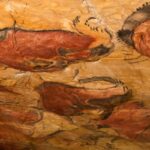We explain what the Homo sapienswhen and where it arose and how it is classified. In addition, what are its characteristics and their evolution.

What is the Homo sapiens?
Homo sapiens is The scientific name of the human species. The use of the term refers to the evolution of the human being and, specifically, to the species that gave rise to the modern man.
The evolution of man was over 4 million years and integrated different genres and hominid species. For 500,000 years, there is only one kind of hominids that evolved from Homo erectus Towards him Homo sapiensand from this to the subspecies Homo sapiens sapiensto which the current human being belongs. This transition ended approximately 35,000 years ago.
The evolution of man and the history of its evolutionary phases is a subject in constant research, which is studied from different disciplines. On many occasions, specialists discuss how to interpret the findings of fossil and material remainshow are the relationships between the different species and subspecies and how evolutionary jumps were made between them.
Therefore, there are different categorizations or definitions that, in turn, are mutating from the new findings and research.
See also: Paleolithic
Origin of Homo sapiens
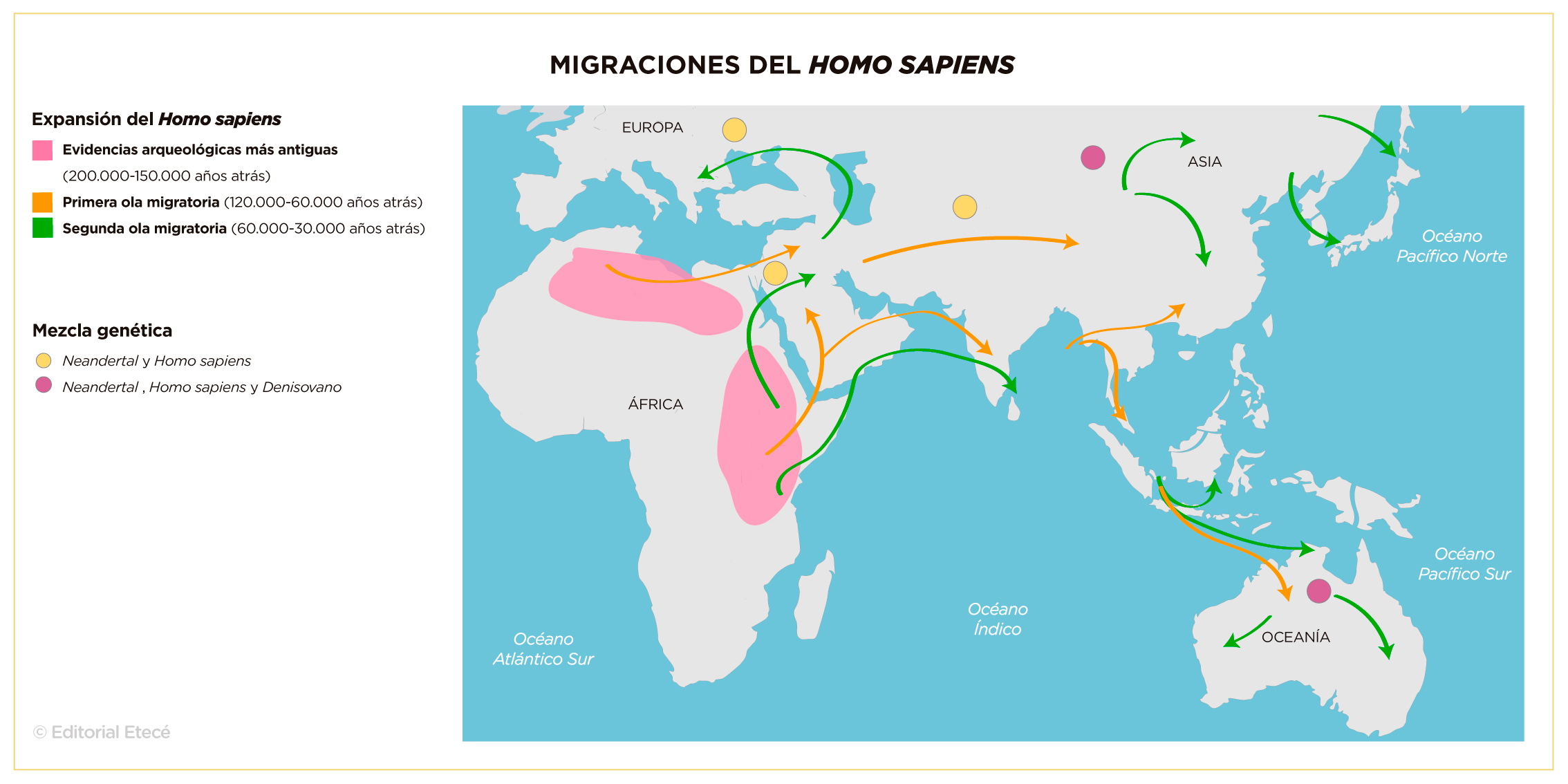
He Homo sapiens is The species that evolved from Homo erectus. The evolutionary transition began 500,000 years ago, but only 200,000 years ago the Homo sapiens As a clearly separate species. To the variety of Homo sapiens who lived this transition is called Homo Sapiens Archaic.
On the other hand, for decades, researchers discuss the origin of the Homo sapiens. Two opposite hypotheses have been postulated:
- Candelabro model: polygenism. Proposes that the ancestral populations of Homo erectus from all over the world they evolved, gradually and independently, towards the Homo sapiens. Those who defend this model argue that the contact between the different geographical populations was essential to maintain a genetic flow, which allowed them to evolve as a whole and not independently.
- Noah’s ark model: monogenism. This model contemplates a unique origin, followed by a migration to the rest of the continents. The species of Homo sapiens He would have emerged in Africa and, from there, would have migrated to Eurasia.
At the moment, Most scientists support the monogeny model. However, intermediate situations between the two models are usually considered to explain the origin of the Homo sapiens. For example, some argue that there could have been a unique origin but immediately followed by migrations through which the newcomers would have intended with populations of Homo archaic sapiens.
He Homo sapiens Within the evolutionary scheme

Like the oldest species of the genus Homohe Homo sapiens is A Bípeda Mamífera specieswhose body presents bilateral symmetry, and that presents sexual dimorphism: females and males are distinguished by the characteristics of their bodies (women have breasts, small and vulva waists; men lack breasts, are more musculature wide and have a penis).
The upper extremities of the human They have prehensile hands with opposable thumbswhich allows you to create and wield tools of diverse type.
In relation to the species of previous evolutionary phases, the Homo sapiens presents the following characteristics:
- Cranial capacity. Its cranial capacity increases to an average of 1500 cm3and scientists consider that they had an intellectual potential equivalent to that of the current human being.
- Height. It grows in stature, reaching 1.70 meters of average.
- Language development. Although it is not known exactly when the first languages appeared, scientists are certain that the Homo sapiens He gave more complex use to language.
- Migration. He lived in Africa, Europe, Asia and Oceania. The subspecies Homo sapiens sapiens He also migrated to America 40,000 years ago.
- Manufacture of tools. He created more elaborate tools and developed different work techniques on the stone.
Lifestyle of Homo sapiens
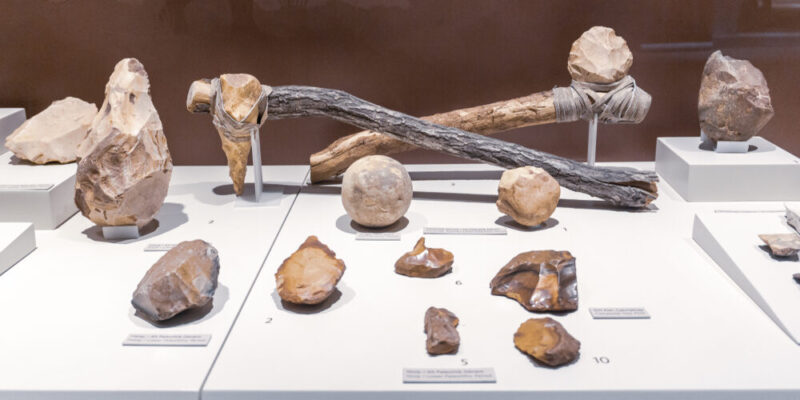
During the Paleolithic (historical period in which the Homo sapiens) The social life of men had the following characteristics:
- Nomadism. Human groups did not live in a fixed place, but moved following animals and seasonal cycles.
- Subsistence economy. The Homo sapiens They fed from elements that existed in nature through hunting and collection. They developed group and more complex hunting techniques, with weapons that allowed them to hunt large animals.
- Bands. The nomadic way of life and the subsistence economy favored that human groups were organized in small groups (called “bands” by historians) of between 20 and 30 people. These groups were united by kinship relations and controlled the territories by which they moved to obtain their resources.
- Equal societies. Primitive men had no leaders or formal bosses. Sometimes an individual could stand out for his skills and was specially respected. The elders were heard from their experience and had greater authority to resolve conflicts. However, they were equal societies in which there was no hierarchy of power.
Debates about him Homo sapiens
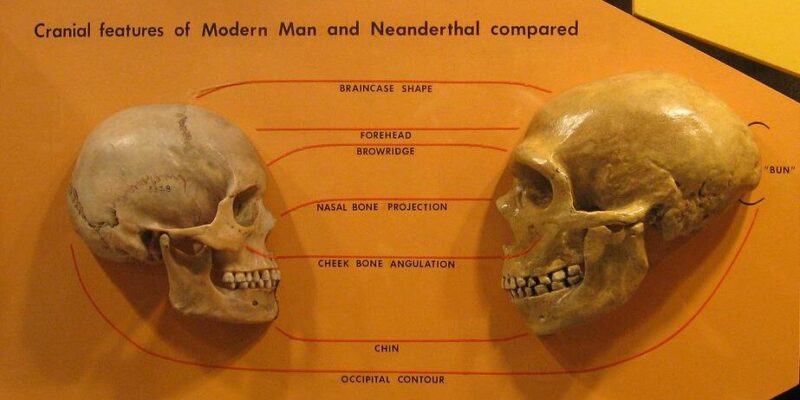
When archaeologists find fossil remains, they must study them to identify what species they belong to. This is done with Studies on the chemical composition and the anatomy of bonesas well as the material remains that appear next to the fossils. It is from this type of studies that, over time, the academic tradition has managed to establish a categorization in phases for the evolution of the human being.
However, Studies are not always exact and scientists often interpret their results differently. Therefore, there are debates on how to categorize certain findings.
This is the case of Homo Neanderthalensison whose remains archaeologists, paleontologists and other specialists discuss. Currently, most consider that it is a subspecies of Homo sapienswith different features and characteristics of the Homo sapiens sapiens (Another subspecies of Homo sapienswhich is the current human being).
Evolutionary scheme of man
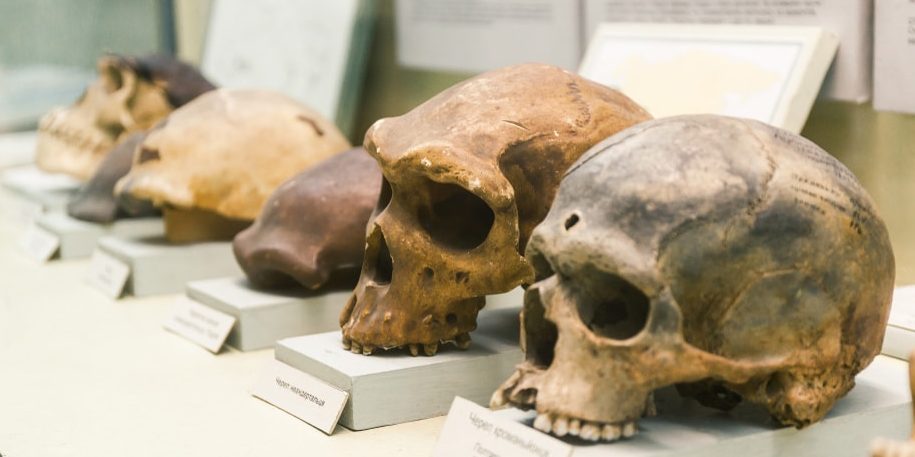
The main evolutionary phases of human being are considered to be the following:
- First ancestors: Australopithecus. He was the first hominid who walked erect and prospered in the African savannas 4-2 million years ago.
- Origin of the human race: Homo habilis. The findings in Tanzania and Kenia of fossil remains of 2.5 million years old allowed to identify a different species, a descendant of the Australopithecus Afarensis. The fossils have a greater cranial volume and some anatomical changes related to the posture. They found themselves next to lithic (stone) materials in the form of cutting tools.
- Territorial expansion: Homo erectus. From the remains found in Africa, Europe and Asia, this evolutionary phase is dated between 1.5 million years and 500,000 years ago. The different communities of Homo erectus They migrated from Africa to other continents. In addition, they manufactured more complex tools than their predecessors and developed subsistence guidelines based on cooperation, the division of labor and the practice of sharing food. They dominated the use of fire and hunted large animals. This phase belongs different species and subspecies, which for many times the specialists categorize as Homo erectusbut include, for example Homo antecessor and al Homo Heidelbergensis.
- SAPIENTIZATION PROCESS: Homo sapiens to the current human being. This stage corresponds to the gradual evolution that occurred from Homo erectus to the first Homo sapiens (called “archaic”), and from this to a subspecies known as Homo sapiens sapiensthe current human being. Of the Homo Sapiens Archaic Another subspecies also descended, known as Homo Neanderthalensis. This process began 500,000 years ago and culminated 35,000 years ago, when the Homo sapiens sapiens It remained as the only surviving species of the genus Homo.
Continue with: Homininos
References
- López Serrano, A. (1996). Hominization and material culture process. The contribution of historical anthropology.
- Harris, M. (1981). Introduction to General Anthropology. Alliance.
- Leakey, R., & Lewin, R. (1994). Our origins. RBA Editors.
- “Homo sapiens” on Wikipedia.
- “Human Evolution” in Wikipedia.
- “The age of Homo sapiens“Maggie Fox in the country.
- “Homo sapiens” at overhistory.com.
- “Homo sapiens” in dinosaurs.info.
- “Homo sapiens left Africa 60,000 years before what was thought” El País (Uruguay).

